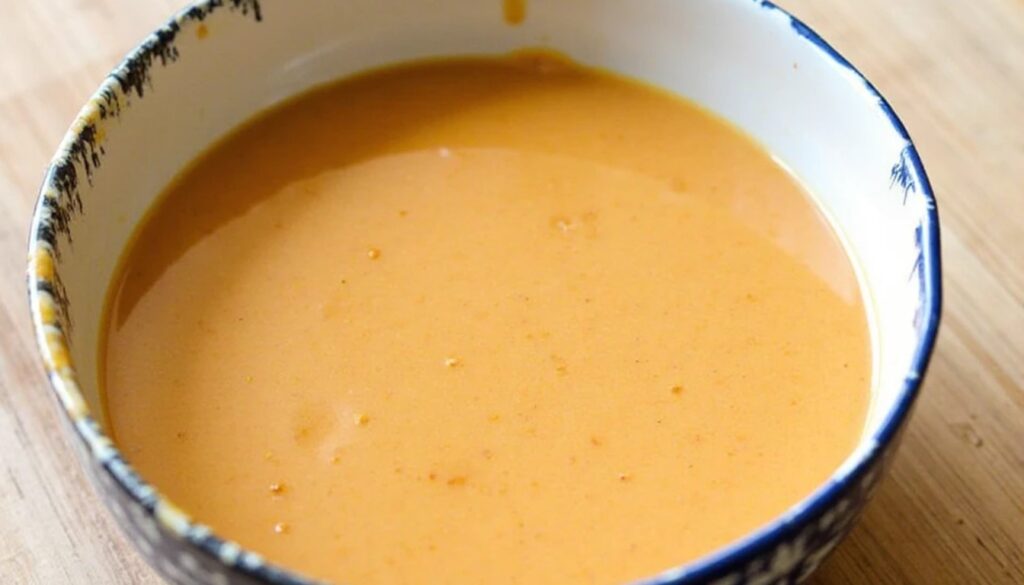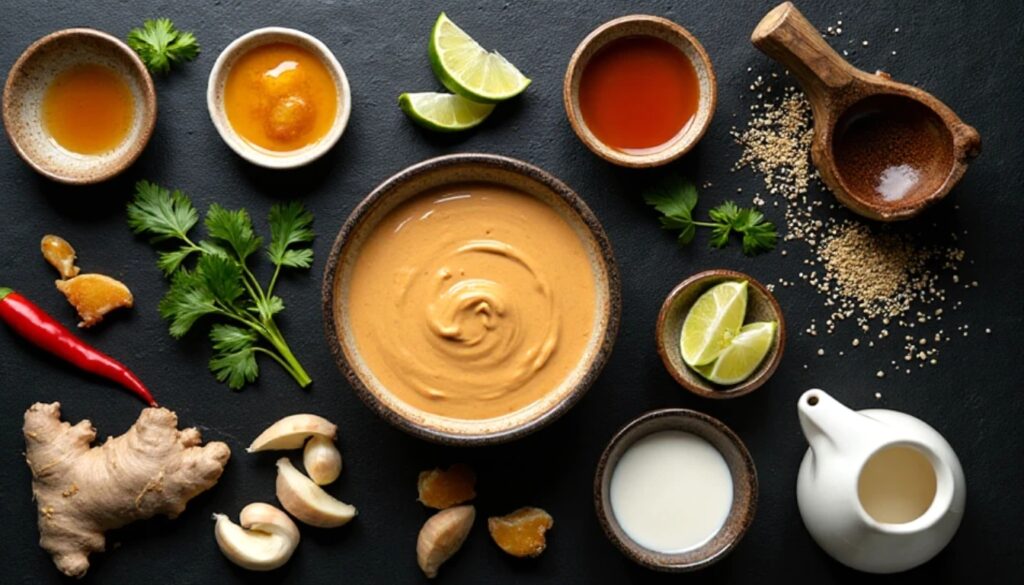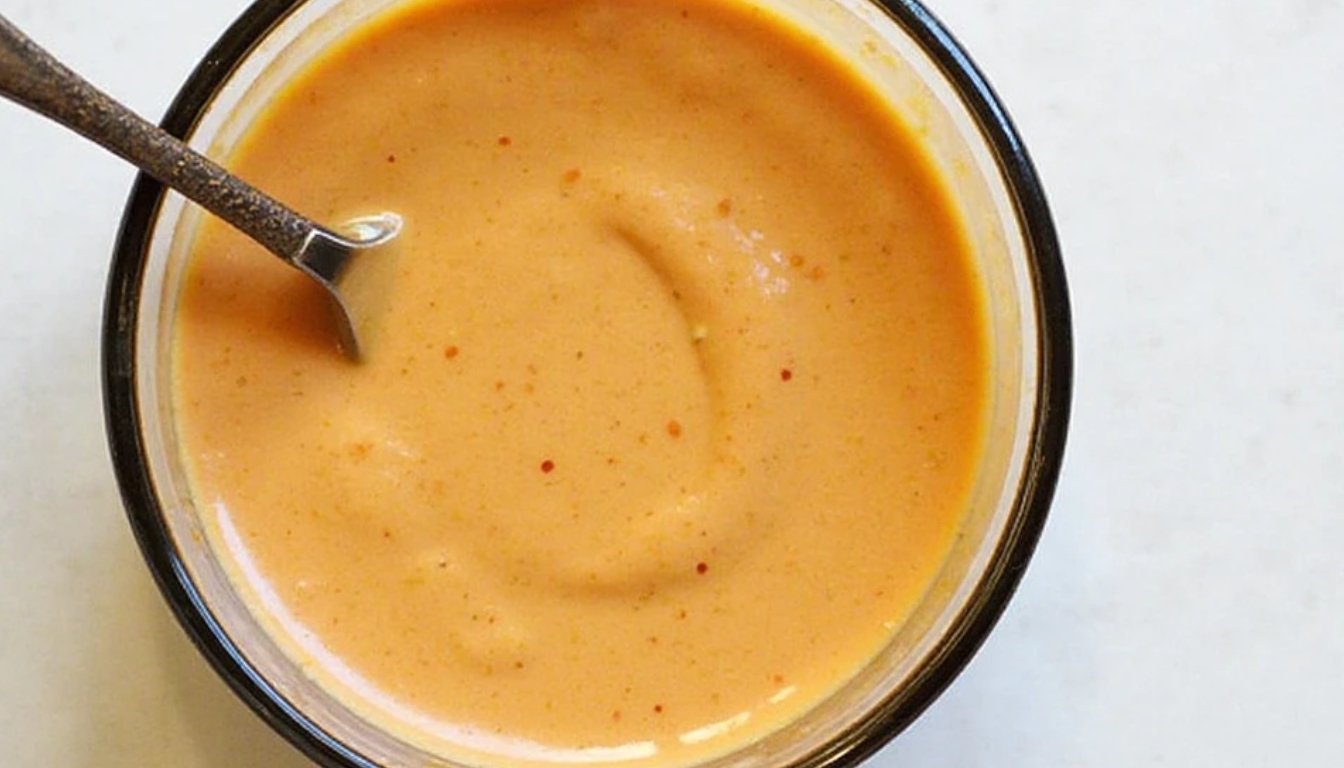Growing up, my family loved trying new foods from around the world. I first tasted Thai peanut sauce in a cooking class. It was rich, creamy, and full of flavor. This sauce changed how I cook at home.
This sauce is amazing because it makes simple meals special. It’s quick to make but tastes like it came from a restaurant. It’s more than just a sauce; it’s a way to make your cooking exciting.
Use it on salads, as a dip, or in main dishes. It’s creamy and has deep flavors. It’s a must-have for anyone who loves to cook.
Table of Contents
Understanding Thai Peanut Sauce’s Culinary Heritage
Thai peanut sauce is a journey through Southeast Asian flavors. It comes from the deep traditions of Malaysia and Thailand. It has won the hearts of food lovers everywhere with its rich taste.

This sauce is more than just a condiment. It’s a key part of street food culture. It was served with skewered meats at festivals and markets.
Origins and Cultural Significance
This sauce has a rich history in Southeast Asian cooking. It shows the creativity of the region’s cooks:
- Developed by street food vendors in Thailand
- Integrated peanut flavors from local agricultural traditions
- Represented a fusion of indigenous ingredients
Traditional vs Modern Variations
Old recipes were kept secret, but new ones have opened up possibilities. Chefs mix ingredients in new ways. They keep the original taste in mind.
Role in Asian Cuisine
Thai peanut sauce is more than a dip. It’s now a key ingredient in many dishes. It connects old cooking ways with new ones.
Essential Ingredients for Authentic Thai Peanut Sauce Recipe

Making a great thai peanut sauce recipe begins with picking the right ingredients. Your sauce will stand out when you use top-notch, natural parts that mix well together.
To make a true thai peanut sauce, you need a few key things:
- Natural, unsweetened peanut butter – gives a creamy base and deep flavor
- Soy sauce – adds umami and depth
- Rice vinegar – brings tangy brightness
- Maple syrup or honey – creates balanced sweetness
- Fresh ginger – adds warm, spicy notes
- Minced garlic – adds aromatic complexity
If you want to make your peanut butter sauce even better, try adding these:
- Coconut milk – for extra creaminess
- Sriracha or chili sauce – to add heat
- Lime juice – for bright, citrusy undertones
Choosing fresh, high-quality ingredients makes your thai peanut sauce taste like it’s from a restaurant. Play with the amounts to get the taste just right for you.
Step-by-Step Guide to Making Perfect Peanut Sauce
Making delicious homemade Thai peanut sauce is simple. Just a few ingredients and basic steps can make an amazing easy peanut dipping sauce. It will take your dishes to the next level.
Essential Preparation Techniques
First, gather all your ingredients for the homemade Thai peanut sauce. The secret to a great sauce is in how you prepare and mix it. Here are key steps for a smooth and tasty sauce:
- Use room temperature ingredients for better blending
- Measure ingredients precisely
- Choose high-quality peanut butter for the best flavor
Mixing Methods for Perfect Consistency
There are two main ways to mix your easy peanut dipping sauce:
- Blender Method: This method blends ingredients fast for a super smooth sauce
- Whisk Method: It gives your sauce a more homemade, rustic feel
Adjusting Sauce Consistency
The key to a perfect homemade Thai peanut sauce is getting the right thickness. Adjust it based on how you plan to use it:
- For dipping: Keep sauce slightly thicker
- For dressing: Thin it out with water or coconut milk
- Use warm water to help ingredients blend seamlessly
Pro tip: Add liquid slowly to control the sauce’s final texture. Start with a little and mix well until it’s just right.
Customizing Your Sauce’s Flavor Profile
Making the perfect spicy peanut sauce is like a dance of flavors. You can turn a basic sauce into something amazing with a few tweaks. It’s all about knowing how to mix ingredients for a rich and tasty experience.
Here are some ways to boost your sauce’s flavor:
- Sweetness Boosters:
- Maple syrup adds a deep richness
- Honey brings natural sweetness
- Brown sugar adds caramel notes
- Spice Intensifiers:
- Sriracha adds a sharp heat
- Chili paste brings complex warmth
- Cayenne pepper gives a strong kick
- Umami Enhancers:
- Fish sauce adds depth
- Extra soy sauce adds richness
- Miso paste adds fermented complexity
When making your spicy peanut sauce, remember to keep it balanced. Start with small amounts of extra ingredients and taste as you go. A creamy peanut sauce should have different flavors that work well together without being too much.
Professional chefs say to taste and adjust slowly. A little salt, some lime juice, or a bit of ginger can make your sauce go from good to great. Trust your taste and try new things with confidence.
Versatile Uses for Thai Peanut Sauce
Thai peanut sauce is a culinary chameleon. It turns simple dishes into amazing meals. This sauce is a must-have for both home cooks and chefs.
Dipping Delights
- Fresh spring rolls
- Raw vegetable sticks
- Grilled chicken skewers
- Crispy tofu bites
Main Dish Magic
Use your thai peanut sauce to make main dishes even better. Here are some ideas:
- Stir-fry sauce for noodles
- Marinade for grilled meats
- Drizzle over roasted vegetables
- Mixed into grain bowls
Salad Dressing Sensation
Make your salads special with this versatile sauce. Use it as a unique dressing:
| Salad Type | Sauce Pairing |
|---|---|
| Asian Slaw | Perfect Match |
| Noodle Salad | Excellent Complement |
| Grilled Vegetable Salad | Delicious Enhancement |
Be creative and try this sauce in your cooking adventures!
Storage Tips and Shelf Life
Storing your homemade thai peanut sauce right is key to keeping its taste fresh. The right way to store it can keep your sauce tasty for days or weeks.
After making your sauce, handle it with care. Put it in an airtight container with a tight lid. Glass containers are best because they keep flavors from mixing and preserve the sauce’s taste.
- Refrigeration temperature: Keep between 34-40°F
- Maximum refrigerator storage: 7-10 days
- Best containers: Glass jars with secure lids
Freezing is great for longer storage. Portion your thai peanut sauce recipe into ice cube trays for easy servings. Once frozen, move the cubes to a freezer-safe bag. Frozen sauce can last up to 3 months.
| Storage Method | Duration | Quality Preservation |
|---|---|---|
| Refrigerator | 7-10 days | Good |
| Freezer | 3 months | Excellent |
Before using sauce from the fridge or freezer, check for spoilage. Throw it away if it looks different, smells bad, or has mold. Warm or stir the sauce gently to get it back to its original consistency before serving.
Common Mistakes to Avoid When Making Thai Peanut Sauce
Making authentic thai sauce needs precision and care. Many home cooks face challenges in making a thai peanut sauce recipe. Knowing common mistakes helps you make a delicious sauce every time.
When making your thai peanut sauce recipe, several mistakes can ruin the final result. Knowing these issues can make your sauce go from good to exceptional.
Texture Troubles to Watch Out For
Getting the right consistency is key for an authentic thai sauce. Common texture problems include:
- Using incorrect peanut butter (avoid sweetened varieties)
- Improper mixing techniques
- Failing to emulsify ingredients completely
Seasoning Balance Challenges
Balancing flavors is an art in thai peanut sauce recipes. Watch out for these seasoning pitfalls:
- Over-salting the sauce
- Adding too much sugar
- Neglecting to taste and adjust seasonings
Temperature Considerations
Temperature is key for a smooth, well-integrated sauce. Key temperature tips include:
- Bringing ingredients to room temperature before mixing
- Avoiding extreme heat when combining ingredients
- Storing the sauce at appropriate temperatures
By focusing on these details, you’ll make a restaurant-quality thai peanut sauce. It will impress your family and friends.
Health Benefits and Nutritional Information
Thai peanut sauce is not just tasty—it’s also good for you. It’s made with ingredients that are full of nutrients. This sauce gives you more than just great taste.
Peanuts are the main ingredient in this sauce. They are a great source of protein. A serving of this sauce can help you meet your daily nutritional needs.
- Rich in protein for muscle support
- Contains heart-healthy monounsaturated fats
- Provides essential vitamins and minerals
Knowing what’s in your sauce helps you make better food choices. Here’s a detailed look at what’s in it:
| Nutrient | Amount per 2 Tbsp |
|---|---|
| Calories | 80-100 |
| Protein | 3-4g |
| Total Fat | 7-9g |
| Carbohydrates | 2-3g |
Even though it’s nutritious, eating it in moderation is important. People with peanut allergies should stay away from it. Those watching their sodium can make the sauce healthier by using less salt or low-sodium options.
Adding thai peanut sauce to your diet can be a smart choice. It’s full of protein, healthy fats, and flavor. It’s a great way to support your health and wellness goals.
Dietary Modifications and Substitutions
Making a versatile thai peanut sauce recipe means being open to different ingredients. You can adjust this tasty sauce to fit your dietary needs or personal taste. It’s all about being flexible.
If you follow a specific diet, you can easily change the vegan peanut sauce. Here are some options:
- Gluten-free alternatives:
- Replace soy sauce with coconut aminos
- Use tamari instead of traditional soy sauce
- Nut-free variations:
- Swap peanut butter with sunflower seed butter
- Use almond butter as an alternative
When you’re tweaking your thai peanut sauce recipe, try these ingredient swaps:
| Original Ingredient | Substitute | Dietary Benefit |
|---|---|---|
| Honey | Maple syrup | Vegan-friendly |
| Dairy milk | Coconut milk | Dairy-free option |
| Regular sugar | Coconut sugar | Lower glycemic index |
Your vegan peanut sauce can be just as creamy and tasty as the original. Try different alternatives to find your favorite mix! Keep in mind that each swap might change the sauce’s taste. You might need to adjust the seasonings to keep the authentic flavor.
Thai Peanut Sauce Food Pairing Guide
Discover the magic of your thai peanut sauce recipe with these pairing ideas. The versatility of this sauce can turn simple meals into unforgettable dining moments.
Exploring the right pairings can take your cooking to new heights. It will also surprise your taste buds. Here are some tasty pairing suggestions to inspire your next meal.
Asian Culinary Delights
Asian peanut sauce is perfect for classic dishes:
- Chicken satay skewers
- Vegetable spring rolls
- Cold Thai noodle salads
- Steamed dumplings
Western Fusion Innovations
Your thai peanut sauce recipe can go beyond traditional dishes. Try these creative western fusion options:
- Grilled chicken sandwiches
- Coleslaw dressing
- Roasted vegetable drizzle
- Burger condiment
Plant-Based Pairings
Vegetarian and vegan food lovers, rejoice! Asian peanut sauce pairs well with plant-based dishes:
- Grilled tofu skewers
- Buddha bowls
- Roasted vegetable platters
- Quinoa salads
Try these pairings to find your favorite combinations. They will make your meals go from ordinary to extraordinary.
Conclusion
Exploring homemade Thai peanut sauce opens a world of tasty possibilities. Making your own sauce lets you play with flavors, turning simple meals into special ones. This sauce is a key ingredient in your kitchen.
Creating the perfect homemade Thai peanut sauce takes time and effort. But the joy of making it is worth it. With each batch, you get better at balancing sweet, savory, and spicy. It makes everything from grilled meats to salads taste better.
Cooking is all about trying new things. Your Thai peanut sauce is a chance to get creative. You can change ingredients and methods to match your taste. Enjoy the journey and the rich history behind this sauce.
Mastering this sauce is more than just a recipe. It connects you to a global tradition that spans ages. Every spoonful is a flavorful adventure, blending taste, skill, and culture.
Tried Our Recipe Yet?
There are no reviews yet. Be the first one to write one.

